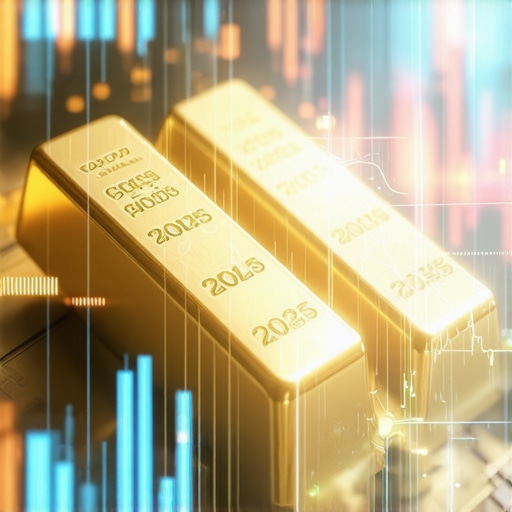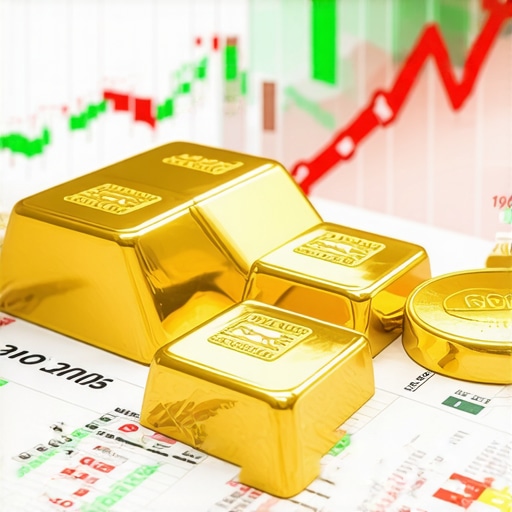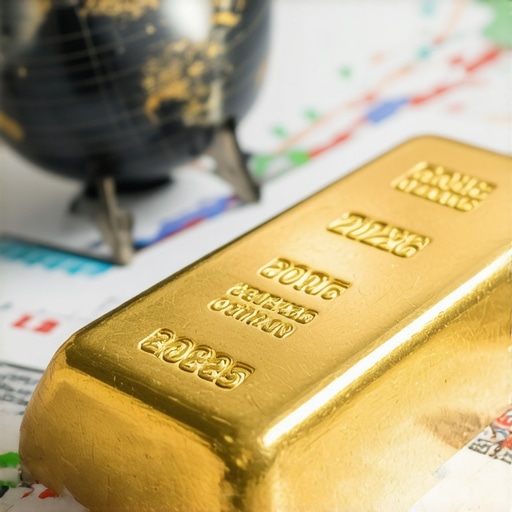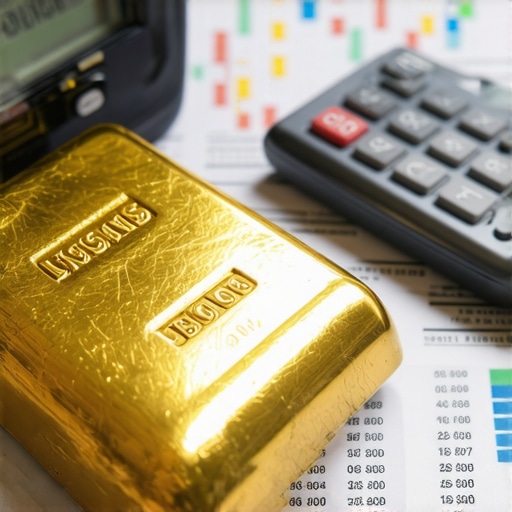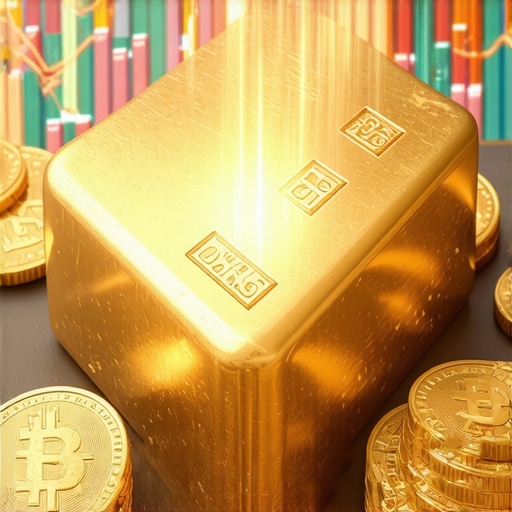Unveiling the Complexities of the 2025 Gold Market: A Strategic Perspective
As the global economy navigates an era of unprecedented volatility and technological transformation, understanding the intricate forces shaping the future of gold becomes essential for investors, policymakers, and industry stakeholders. Gold, long regarded as a resilient store of value, is poised at a pivotal juncture where supply constraints, demand fluctuations, and macroeconomic policies converge to influence its trajectory in 2025.
Supply-Side Dynamics: Challenges and Opportunities in Gold Mining and Recycling
One of the critical factors in forecasting gold prices involves analyzing the supply chain, which is increasingly affected by geopolitical tensions, environmental regulations, and technological advancements in mining. Notably, the decline in mature gold deposits and the rising costs of extraction pose significant challenges. Meanwhile, recycling efforts and technological innovations in ore processing present opportunities to mitigate supply shortages. For instance, countries like Australia and Russia continue to dominate global production, yet their output faces sustainability hurdles that could tighten the market.
Demand Drivers: A Multi-Sector Analysis of 2025’s Gold Appetite
On the demand front, the jewelry sector, central bank policies, and investment trends form a complex mosaic. The resurgence of central bank gold purchases, driven by geopolitical uncertainties and inflation hedging strategies, significantly influences price dynamics. Concurrently, the rise of digital assets and gold-backed ETFs diversifies investor engagement, although these instruments are subject to regulatory evolutions that could impact their market share. Additionally, technological sectors increasingly incorporate gold in electronics and renewable energy applications, further complicating demand patterns.
What Will Be the Main Price Drivers in 2025? An Expert Breakdown
In assessing the primary price drivers, macroeconomic stability, inflation expectations, and currency fluctuations are paramount. The interplay between U.S. dollar movements and gold prices remains a critical focus, as a weaker dollar historically correlates with rising gold valuations. Furthermore, the policies of major central banks, especially regarding quantitative easing or tightening, will directly impact liquidity and gold’s safe-haven appeal. According to a recent market analysis report, these factors will likely dominate the 2025 landscape.
How do global geopolitical tensions influence gold’s demand and price volatility?
Geopolitical tensions, including conflicts, trade disputes, and regional unrest, tend to elevate gold’s role as a safe-haven asset, thereby increasing its demand and price volatility. In 2025, ongoing geopolitical uncertainties—particularly involving major economies—are expected to sustain this demand surge, emphasizing gold’s importance in diversified investment portfolios.
For investors aiming to position themselves effectively, developing a long-term gold investment strategy tailored to these evolving dynamics is crucial. Explore our comprehensive guide on developing a long-term gold investment plan for 2025 and beyond.
As the landscape continues to evolve, staying informed through expert insights and market analyses remains vital. Engage with industry specialists and contribute your own perspectives to refine strategies that align with the projected trends in the 2025 gold market.
Assessing the Political Risk Landscape: A Key to Gold Market Forecasting
As we delve deeper into the factors shaping gold’s trajectory in 2025, understanding the influence of geopolitical tensions becomes paramount. Political instability, trade wars, and regional conflicts often serve as catalysts for increased demand for gold as a hedge against currency devaluation and economic uncertainty. The recent escalation in tensions between major powers, such as the US and China, exemplifies how political risk feeds into gold’s safe-haven status, fueling price volatility and shifting investor sentiment.
How Might Evolving International Relations Reshape Gold’s Demand Dynamics?
In a world where diplomatic relations are increasingly complex, gold’s role extends beyond traditional hedging. Countries may implement strategic reserves or alter monetary policies in response to international tensions, directly impacting gold demand. For instance, heightened sanctions or trade restrictions could dampen supply chains or induce currency fluctuations, further influencing gold prices. Experts suggest that understanding the nuanced interplay between politics and economics is essential for making informed investment decisions in 2025. An insightful market analysis report highlights these emerging risks and opportunities.
Can Gold Maintain Its Safe-Haven Status Amid Political Turmoil in 2025?
This question challenges investors to consider whether traditional perceptions of gold as a safe-haven are resilient against the backdrop of escalating geopolitical conflicts. Historical data indicates that during periods of heightened uncertainty, gold prices often surge; however, the magnitude and duration of these movements depend on the severity of political crises. For investors looking to safeguard their wealth, diversifying with a strategic mix of gold and other assets—such as gold-backed ETFs and bullion—can be a prudent approach. To build a resilient portfolio, explore our guide on developing a diversified gold investment portfolio for 2025.
Engaging with geopolitical risk assessments and staying informed about international developments will be critical for optimizing your gold investments. Share your thoughts in the comments or consider reading more about how global economic trends will influence gold prices in 2025 to deepen your understanding.
Deciphering the Intricate Relationship Between Currency Fluctuations and Gold Valuations
Currency movements, particularly the U.S. dollar, remain a pivotal factor influencing gold prices in 2025. An inverse correlation is well-documented: when the dollar weakens, gold tends to appreciate, driven by its status as a global reserve asset and alternative safe haven. However, this relationship is nuanced by macroeconomic policies, such as quantitative easing (QE) and tightening measures, which can distort traditional correlations.
For instance, recent studies, such as those published by the International Monetary Fund (IMF), highlight that during periods of aggressive QE, gold often benefits from increased liquidity, even if the dollar remains relatively stable. Conversely, sharp dollar appreciation due to Federal Reserve rate hikes can suppress gold demand, especially in international markets where dollar-denominated prices are affected.
How Do Central Bank Policies Shape Gold’s Price Dynamics in 2025?
Central bank policies are at the heart of liquidity and inflation expectations, directly impacting gold’s role as an inflation hedge and safe-haven asset. Countries adopting quantitative easing to stimulate sluggish economies tend to bolster gold demand, while tightening measures, aimed at combating inflation, can lead to short-term price corrections. Notably, the European Central Bank and Bank of Japan’s unconventional monetary policies continue to influence global gold flows, as detailed in the IMF Working Paper on Monetary Policy and Gold Prices.
Investors should monitor these policies closely, as they often herald shifts in liquidity that ripple through commodity markets, including gold. An understanding of these macroeconomic levers enables strategic positioning ahead of policy announcements, especially during periods of heightened uncertainty.
Emerging Technologies and Their Impact on Gold Demand: A Double-Edged Sword
Technological innovation continues to redefine gold’s demand landscape. The integration of gold in electronics, renewable energy systems, and even quantum computing hardware underscores its importance in high-tech manufacturing. According to a report by the World Gold Council, these applications are projected to grow at a compound annual rate, significantly influencing demand in the coming decade.
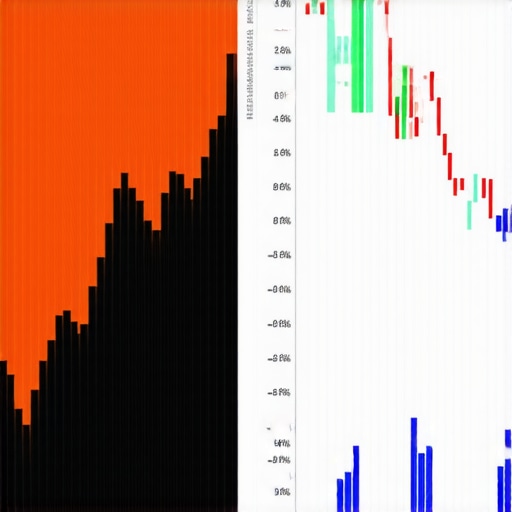
Yet, this technological reliance introduces volatility—if, for example, breakthroughs reduce the amount of gold needed per device or alternative materials emerge, demand could diminish unexpectedly. Conversely, geopolitical strategies to secure supply chains for critical technology components might lead to strategic stockpiling, temporarily boosting gold demand.
What Are the Long-Term Implications of Technological Demand on Gold Supply and Price Stability?
Long-term, technological demand could impose structural constraints on gold supply, which is already challenged by declining ore grades and environmental restrictions. This scarcity dynamic might lead to increased price volatility, especially if combined with macroeconomic shocks or geopolitical tensions. As such, investors should consider not only current demand trends but also potential technological disruptions that could alter supply-demand equilibria.
For a comprehensive understanding of how emerging technologies will shape gold’s market, consult specialized reports from industry leaders and academic institutions, such as the World Gold Council’s Technology Impact Study.
Engage and Evolve: How Deep Market Analysis Enhances Investment Strategies in 2025
In the rapidly shifting landscape of the 2025 gold market, ongoing market analysis, geopolitical risk assessments, and macroeconomic trend monitoring are indispensable. Engaging with expert forums, subscribing to specialized publications, and leveraging advanced analytics tools can provide a competitive edge. Remember, gold investment is as much about understanding the complex web of influences as it is about timing the market.
Curious about how to integrate these insights into your investment portfolio? Explore our detailed guides and expert analyses, and don’t hesitate to join discussions with industry specialists. Your strategic engagement today can shape your success tomorrow.
Innovative Supply Chain Solutions: Unlocking the Hidden Potential in Gold Recycling and Green Mining
As environmental concerns grow, the gold industry faces a pivotal challenge: balancing sustainable practices with supply demands. Cutting-edge advancements in green mining technologies, such as bioleaching and hydrometallurgy, are revolutionizing extraction processes, reducing ecological footprints, and potentially increasing yields from lower-grade ores. Moreover, enhanced recycling techniques—leveraging AI-driven sorting and chemical recovery—are poised to significantly boost secondary gold supplies, easing pressure on primary mining sources.
Can emerging eco-friendly technologies redefine gold supply sustainability?
Indeed, innovative solutions like phytomining, which employs hyperaccumulator plants to harvest gold from soil, exemplify the transformative potential of eco-conscious extraction. According to a detailed report by the United Nations Environment Programme (UNEP), the integration of such sustainable methods could mitigate environmental impacts and stabilize supply chains amid geopolitical uncertainties. Investors who anticipate these technological shifts can position themselves advantageously by monitoring regulatory developments and technological breakthroughs.
Explore our comprehensive guide on sustainable gold mining innovations for 2025 and beyond to stay ahead of these trends.
Demand Dynamics in the Digital Age: How Tech Innovations Are Reshaping Gold Use
The proliferation of high-tech industries continues to reshape gold’s demand landscape. Beyond traditional jewelry and bullion, sectors like quantum computing, space exploration, and advanced telecommunications are increasingly reliant on gold’s unique properties. The integration of nanotechnology for ultra-efficient electronic components and the development of gold-based conductive inks are expanding applications, fueling demand growth and introducing new volatility patterns.

According to recent findings from the IEEE Spectrum, the next decade could see a 15-20% increase in gold utilization within high-tech sectors, especially as quantum processors and satellite systems require ultra-pure gold. These innovations not only elevate demand but also influence supply chain resilience and price stability.
How will technological advancements influence long-term gold demand and supply resilience?
Technological evolution could lead to both demand surges and supply constraints. For instance, if research breakthroughs enable lower gold consumption per device, demand may stabilize or decline; alternatively, strategic stockpiling during geopolitical tensions could temporarily inflate demand. Investors should actively monitor R&D trends, patent filings, and industry collaborations reported by institutions like the IEEE and the World Gold Council to gauge future market shifts.
Macro-Financial Policies and Currency Ecosystems: Their Role in Gold Price Volatility
Central banks’ monetary policies, especially in emerging economies, are increasingly intertwined with currency stability and inflation management. The adoption of digital currencies (CBDCs) and shifts toward decentralized finance (DeFi) platforms introduce new variables affecting gold’s safe-haven status. For example, countries experimenting with digital fiat could influence gold’s role as a currency hedge, impacting both demand and volatility.
Research by the Bank for International Settlements (BIS) emphasizes that the convergence of digital monetary systems and traditional finance will reshape gold’s role in international reserves and investor portfolios. Staying informed about these policy developments is crucial for strategic positioning in 2025.
What strategic approaches can investors adopt to navigate macroeconomic and currency risks?
Developing a diversified asset allocation that includes physical gold, ETFs, and digitized gold holdings can hedge against currency fluctuations and inflation. Engaging with macroeconomic analysis from institutions like BIS and IMF, which detail evolving monetary frameworks, will enhance decision-making robustness. Investors should also consider emerging geopolitical alliances and trade agreements, as highlighted in recent reports by the Council on Foreign Relations, to anticipate potential market shifts.
Deepening your understanding of these complex dynamics will empower you to craft resilient investment strategies that thrive amid uncertainty. Explore advanced insights and join discussions with industry experts through our platform.
Expert Insights & Advanced Considerations
1. Gold’s Role as a Strategic Hedge Will Intensify Amid Geopolitical Uncertainty
As geopolitical tensions escalate, gold’s safe-haven status becomes even more vital for diversified portfolios. Investors should consider integrating physical gold and gold-backed ETFs to mitigate risks associated with regional conflicts and political instability, ensuring resilience against currency devaluation and market volatility.
2. Technological Innovation Will Both Boost and Disrupt Gold Demand
Emerging technologies, such as quantum computing and advanced electronics, will continue to drive demand. However, breakthroughs in alternative materials or efficiency may reduce gold’s necessity in certain sectors, creating a complex supply-demand dynamic that requires vigilant monitoring of R&D developments and industry patents.
3. Central Bank Policies and Digital Currencies Will Shape Price Volatility
With the proliferation of CBDCs and decentralized finance, central bank policies are evolving, influencing gold’s role as a currency hedge. Strategic diversification into physical gold and digital assets can hedge against macroeconomic and currency risks, providing a balanced approach amid regulatory and technological shifts.
4. Sustainable Mining and Recycling Will Become Critical in Ensuring Supply Stability
Innovations like bioleaching and AI-driven recycling are set to increase secondary gold supplies, reducing environmental impacts. Investors should track these developments, as they will influence long-term supply stability and price resilience, especially under tightening environmental regulations.
5. Market Analysis and Expert Resources Are Indispensable for Navigating Uncertainty
Engaging with authoritative sources such as the Gold Market Analysis 2025 and Understanding Gold Supply & Demand Trends will provide a competitive edge. Regularly updating your knowledge base through these resources is essential for making informed investment decisions.
Curated Expert Resources
- Gold Market Analysis 2025: Provides comprehensive insights into market drivers, risks, and opportunities, essential for strategic planning.
- World Gold Council Reports: Offers in-depth research on technological impacts, supply chain innovations, and demand trends.
- IMF and BIS Publications: Deliver macroeconomic analysis and policy implications affecting gold prices and investor strategies.
- IEEE Spectrum & Industry Patents: Track technological advancements influencing gold demand and supply dynamics.
- United Nations Environment Programme Reports: Focus on sustainable mining and recycling innovations shaping future supply stability.
Final Expert Perspective
Understanding the future of the gold market in 2025 demands a multi-layered, expert approach that considers geopolitical, technological, and macroeconomic factors. The integration of sustainable practices, innovative technologies, and evolving monetary policies will be pivotal. Engaging continuously with authoritative analysis and staying adaptable will empower investors and industry leaders to navigate uncertainties and capitalize on emerging opportunities. For those committed to strategic excellence, exploring comprehensive resources and contributing your insights will facilitate a resilient and prosperous engagement with gold’s evolving landscape.






